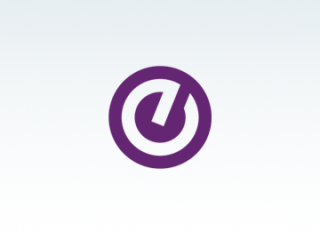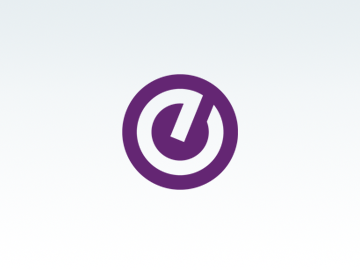A campaign framework for fundraising in a changing economy

Key takeaways
- Take a holistic view of the campaign and adopt a CRM mindset
- Use data to engage with donors in a personalised and meaningful way
- Focus on donor relations and stewardship
Editor’s Note: This article is a collaboration between Ellucian’s Beth Brenner, associate vice president, advancement, and Jenny Jones, senior strategist, advancement. Prior to joining Ellucian, and during the Great Recession, Beth worked in advancement at UC Davis and Cal Poly San Luis Obispo and Jenny worked in alumni affairs at Duke University School of Medicine. Here, they draw on that experience to offer strategies for fundraising in a down economy.
Fundraising during a pandemic
In this era of the coronavirus (COVID-19) pandemic, when advancement teams have had to reprioritise campaigns to support student needs, does the traditional concept of a campaign still apply?
A fundraising campaign is typically seven to eight years. In that timeframe, there are a whole host of priorities to get funded—and those priorities could shift dramatically. But when you're in the middle of your campaign, it’s unreasonable to abandon the pursuit a multi-million dollar fund meant to advance initiatives of vital importance to donors and the institution. Pandemic or not, you have to keep striving to reach your established campaign goal. And now, you also simultaneously need to raise funds to meet the immediate needs of students and the campus community impacted by the coronavirus.
So how do you shift some of your priorities? How do you pivot with your donors to meet those immediate needs while still staying true to the framework of your campaign?
Focus on donors, their passion, and their vision
According to an Inside Higher Ed survey of campus leaders about their response to the COVID-19 crisis, 87 percent of presidents said they are focused on cultivating new donor bases rather than reducing academic programmes or cutting other offerings in the future.
Now more than ever, it’s essential to strengthen the partnership between philanthropy and higher education to meet the needs stemming from the pandemic while shifting institutional priorities to effectively serve students and faculty, promote learning and research, and engage communities. Advancement must focus on the true spirit of philanthropy—partnering with donors and embracing their passions, charting paths toward achieving a vision—rather than a singular path toward a monetary goal.
So, how can we make a more meaningful connection for donors and alumni to support higher education institutions with some of these larger goals in mind? How can we shift the measure of our work in Advancement toward the impact of philanthropy, and away from a primary focus on achieving the next big seven or eight-figure dollar goal?
We do so by shifting our mindset and priorities from trying to fill the traditional fundraising buckets (e.g., buildings, research, and programmatic support) toward engaging donors in new, life-changing and world-changing opportunities for philanthropy aligned with their passions and interests. Student homelessness? Food insecurity? Providing technology such as tablets, laptops, or hotspots for students in need? This purpose-driven approach begins with a commitment to truly learning about and understanding your donors’ passions. Data can provide us with the crucial pieces of information we need to identify and cultivate the most meaningful relationships between constituents and the institution, but importantly, it forms the building blocks of collaborative strategies that align donors’ philanthropic goals to institutional priorities.
Capturing and leveraging data to inspire philanthropy
Growing a data-driven, donor-centric approach starts with transforming business processes across the institution and a commitment to gathering and diligently recording data into a shared system. This responsibility falls to the entire team—not just gift and data entry staff but everyone in Advancement from gift officers to alumni staff to donor relations to executives.
In this COVID-19 world, donor data will be coming from different sources and collected by different people. Instead of a conversation with an alumnus at a tailgate, at a reunion event or dedication ceremony, our interactions may increasingly come from a phone call, a response to an email, a comment made during a webinar, or a post on social media. This information needs to be captured in a centralised system that is accessible to all.
That’s where a CRM comes in. A CRM delivers a holistic view of the constituent lifecycle and enables us to make decisions about how to best engage with individuals and groups. By using a CRM to capture and uncover donor interests, we can understand what those individuals are most passionate about when it comes to their personal philanthropy. This insight can be used to design tailored communications that inspire philanthropists to talk with institutional leaders about giving through higher education to change the world in a way that's meaningful for them.
A campaign framework for fundraising in a changing economy
Experience suggests that donors will continue to give, even during a recession. As we move forward, we can reenvision the way that campaigns are constructed and how we build toward them, how we plan for them. To that end, here is a framework for fundraising in a changing economy based on our collective experience.
Pause your campaign and assess priorities. Don’t make new asks. Listen and learn from your alumni, donors, and closest partners what is top of mind for them. Where do they want to lend their expertise, time, and talent to support the institution’s mission during this time? Assess campaign priorities based on what you learn.
Capture a holistic view of the campaign. Look at the whole framework. And look at the data—it will inform whether you can be successful with your current plan and where your opportunities are. Based on the data and your current donors, do you have the capacity to garner a certain amount and in support of which priorities? And what opportunities can you leverage to improve?
Identify and communicate the immediate needs. There’s a misconception around the important role that annual and campaign gifts play for the majority of institutions because of large institutional endowments. Since the majority of endowed funds are restricted and cannot be immediately accessed or directed to new financial needs, communicating the most pressing opportunities for philanthropy to have the greatest impact during the current fiscal year will help dispel those myths.
Share the goals and potential impact of the gift. For example, raising money to construct a new building without a meaningful connection to an impactful outcome won’t cut it. But raising money for a new student success center that delivers vital services for physical and emotional health, fosters diversity and inclusion, and increases retention and graduation rates will likely attract more support.
Steward your donors and keep them involved. Say thank you and show your donors what their gift has accomplished, and what’s to come. Also, talk to your donors about how they want to handle giving in this economy as their situation and priorities may have changed.
Engage donors through personalised communications. Use the data in your system to make sure you're making the right asks, to the right people, in the right way, at the right time. Take the time to discover what your donors are passionate about, what they care about, and communicate with them about those topics to keep them engaged. Be open to a non-linear path as donors may change the focus of their philanthropic priorities while they gauge the outcomes associated with their gifts.




